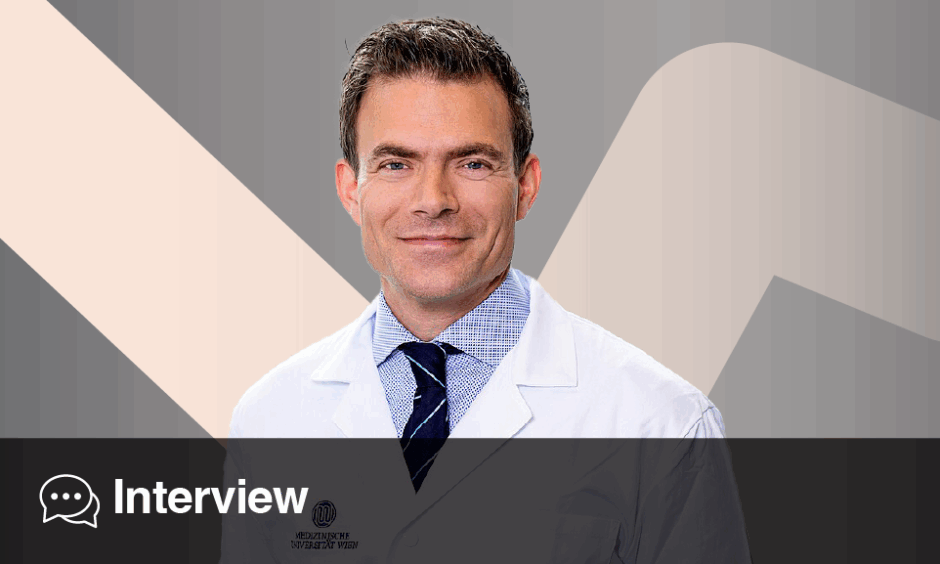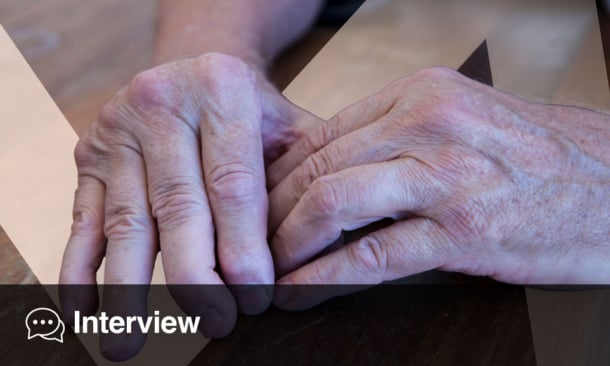Daniel Aletaha | Chair of Rheumatology and Head of the Division of Rheumatology, Medical University of Vienna, Austria; Past-President, European Alliance of Associations for Rheumatology
Citation: EMJ Rheumatol. 2025;12[1]:58-59. https://doi.org/10.33590/emjrheumatol/UNQB9242
![]()
RheumaFacts and MyEULAR featured prominently in this year’s European Alliance of Associations for Rheumatology (EULAR) Congress. What do you hope these initiatives will achieve in the long term?
RheumaFacts has been one of our major initiatives for some time. The idea is to gather information from all our member countries about rheumatic diseases and their impact on patients’ lives. We want to collect metrics and data that can ultimately support advocacy. This data will help us highlight the importance of rheumatic diseases, which can be just as significant as conditions like diabetes, hypertension, or cancer in terms of population impact, how they affect productivity, and overall burden. Rheumatic diseases are the number one cause of productivity loss in Europe and the second most common reason for seeing a doctor. They are highly relevant but often under-recognised at political and media levels. This data will also be an invaluable resource for research purposes.
MyEULAR is a new platform we launched at this year’s Congress to support several goals. For the first time, individual membership is possible; before this, only societies could join. With this expansion, MyEULAR helps members manage their membership and acts as a one-stop shop for related activities and resources. Whether you are a committee member, a young rheumatologist looking for educational content, or attending the Congress, it provides tailored access. We heard that people sometimes find EULAR’s diverse offerings difficult to navigate, so this modular platform helps personalise the experience and makes it easier to find what is most relevant to them. We have launched the basic version here in Barcelona, and it will be expanded every few months with new features to better serve the rheumatology community. With individual membership, EULAR will also have a stronger voice on policy issues and other key matters.
During last year’s press conference, you mentioned that non-inflammatory diseases like osteoarthritis (OA) were a major unmet challenge. Have you seen any meaningful progress on this front since last year?
OA is still the number one unmet need in terms of prevalence. We heard about two new studies on interventions, but the major breakthrough is still missing. OA is sometimes seen as less dramatic, but its real burden comes from its chronic impact, high prevalence, and how it affects the elderly population in particular. A few promising approaches are being tested in clinical studies, but it will likely take a few more years before we see the first truly disease-modifying drugs that will change the lives of people with OA.
The EULAR Network of TRIal centres (ENTRI) was still ramping up last year. How has it evolved over the past 12 months, and what impact are you beginning to see on trial recruitment and collaboration?
It has grown very well. We now have over 290 centres registered, and it is one of our success stories. We’re ready for the first sponsors who want to run clinical trials in Europe. They’re approaching EULAR and asking if we can help them find the right centres; this will help us move beyond the same handful of well-known centres, and bring visibility to many others that had not been on the radar of any sponsors.
Is there still anything to be done to reach the end goal?
Now it’s up to sponsors to use the platform. I think they’ll be surprised at the access it provides to centres and patients in Europe. They might also realise that they don’t need to look elsewhere in the world for their pivotal trials, because Europe has many patients who could benefit from clinical trials.
Trials represent the tip of the iceberg in terms of medical care. The more patients involved, the better, because these are the newest and most innovative therapies, and patients get access years before they are widely available. We should make sure that multinational trials continue to come to Europe. ENTRI is key to making that happen and keeping Europe attractive for clinical research.
As you step down from your role as president, what do you hope EULAR will continue to champion in the future?
Although I am stepping down, I will still be around for at least 2 more years as past-president, offering advice if needed. However, given how well things are progressing, I don’t think my advice will be necessary. I have always been involved in EULAR, and I hope to stay involved in different ways, perhaps through task forces. The presidency was a great experience, but it’s good that it only lasts for a short time. It is very rewarding to hand over to people you trust and know will ensure continuity. That is what makes the work worthwhile.
I will also focus a bit more on my research. I coordinate two large-scale European consortia that were partly secured during my presidency. It has been a busy time, and now I hope to have a bit more space for that.
Are there any sessions at this year’s Congress that you’re particularly looking forward to?
With 177 sessions across 15 parallel tracks, 5,200 abstracts submitted, and 350 invited speakers from 40 countries, it is really hard to choose. I didn’t prepare for this question because it’s so difficult. Picking one would seem to downplay everything else. What I can say is that, whatever your area of interest, whether it’s basic science, clinical research, translational work, rheumatoid arthritis, OA, health policy, or health professionals in rheumatology, you will find the top news and latest information in your field at EULAR. That is what we’ve aimed for, and we’ve worked hard to achieve it.
What matters to me might not matter as much to someone else. I focus a lot on rheumatoid arthritis research, so I might miss other things, but whatever your area, you will find the top science here. We do not accept unpaid abstracts, and we have a rigorous review process with multiple reviewers per abstract, summary scores, and a fair system to ensure that we highlight the best science for oral presentations.








